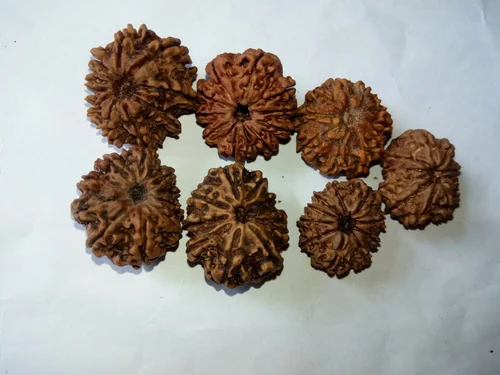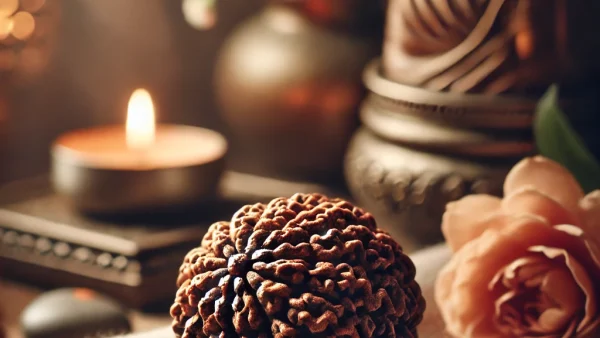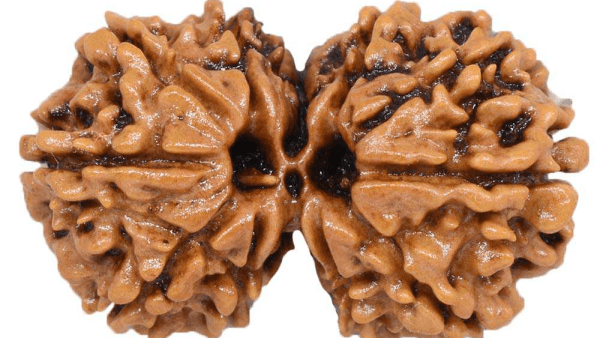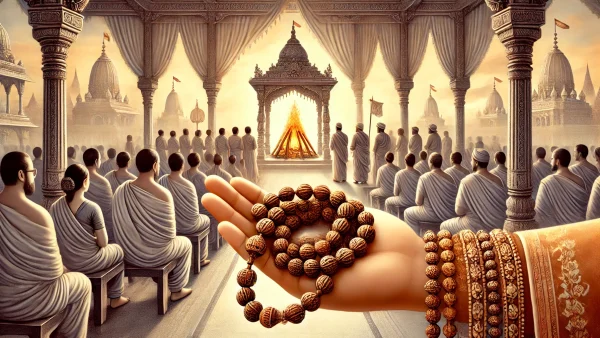Rudraksha, people seeking spiritual growth, peace of mind, or even specific health benefits often look to the powerful beads associated with Lord Shiva. However, not all Rudraksha beads are created equal. A comparison frequently arises between two of the most popular origins: Nepali and Indonesian Rudraksha. Both types possess distinct qualities, benefits, and appearances that can influence a person’s spiritual journey and goals. But, which one should you choose? Let’s dive into the nuances of each, exploring everything from their unique characteristics to the specific types you might find in each variety.
What Are Rudraksha Beads?
Rudraksha beads are traditionally believed to hold divine energies, resonating with the essence of Lord Shiva himself. Derived from the seeds of the Elaeocarpus ganitrus tree, these beads are highly revered for their ability to harmonize the mind, body, and soul. Each Rudraksha is distinguished by “mukhi” (faces), which refers to the number of lines or partitions seen on the bead’s surface. These mukhis vary from 1 Face to even 21 Faces, each possessing specific attributes and influencing different aspects of life.
Why Compare Nepali and Indonesian Rudraksha?
Though the Elaeocarpus ganitrus tree grows in both Nepal and Indonesia, the beads from each region exhibit distinct characteristics. Understanding these differences can be vital in choosing the right Rudraksha for your journey. Here’s a detailed breakdown of the key aspects that set these beads apart.
Key Differences Between Nepali and Indonesian Rudraksha
1. Size and Shape
Nepali Rudraksha beads are typically larger, with well-defined mukhi lines that make them highly distinguishable and easy to inspect. The size adds to their appeal, with each mukhi more pronounced and thus, easier to distinguish.
In contrast, Indonesian Rudraksha beads are smaller and more rounded in shape. Their mukhi lines can be harder to identify due to their subtler indentations. For those who prefer a more delicate, subtle look, the smaller Indonesian Rudraksha might be the better choice.
2. Spiritual and Healing Properties
Both types of Rudraksha hold significant spiritual and therapeutic properties, but there is a belief that Nepali Rudraksha has a more potent energy. Many users and practitioners feel that Nepali beads have a denser vibration, potentially due to their larger size and more defined structure. They are often chosen by serious meditators and those who seek deeper spiritual experiences.
On the other hand, Indonesian Rudraksha is known for its gentler energy. Those who are new to Rudraksha might find the subtler energies of Indonesian beads easier to acclimate to, making them an excellent choice for beginners or individuals with sensitive energies.
3. Durability and Lifespan
When cared for properly, both Nepali and Indonesian Rudraksha beads have long lifespans. However, due to their larger size and dense structure, Nepali Rudraksha may be slightly more durable. Indonesian Rudraksha, while sturdy, can sometimes wear down faster due to its smaller, more delicate structure.
4. Cost and Availability
The rarity of large, well-defined Nepali Rudraksha makes it generally more expensive. The labor-intensive process of harvesting and ensuring quality is also a factor in its higher price point. By comparison, Indonesian Rudraksha is more widely available and tends to be more affordable.
For those seeking genuine Nepali Rudraksha, look for trusted sources. You can buy authentic Nepali Rudraksha at spiritualguru.lk, ensuring quality and authenticity.
Types of Rudraksha Beads: A Comparison Across Mukhi
Different mukhis serve various purposes and carry unique energies. Here’s how Nepali and Indonesian Rudraksha compare across different popular mukhis:
1 Face Rudraksha
- Nepali: Known for its rarity, this Rudraksha is powerful and used primarily by advanced practitioners and gurus.
- Indonesian: While still effective, the Indonesian 1 Face is more accessible and may be suitable for everyday wearers seeking enhanced concentration and calmness.
2 Face Rudraksha
- Nepali: Associated with harmony in relationships, this 2 Face Rudraksha is often recommended for couples or those seeking balance in partnerships.
- Indonesian: This bead provides a gentler effect, promoting peace and understanding, often preferred by those new to energy-based practices.
3 Face Rudraksha
- Nepali: Known for assisting with confidence and overcoming fear, the Nepali 3 Face Rudraksha can be transformative for individuals undergoing life changes.
- Indonesian: Provides similar benefits but in a more gradual way, making it suitable for those sensitive to energy shifts.
4 Face Rudraksha
- Nepali: Often associated with wisdom and intellect, the 4 Face Nepali Rudraksha is highly regarded by students and intellectuals.
- Indonesian: Offers a milder influence, making it ideal for general personal development and focus.
5 Face Rudraksha
- Nepali: This is one of the most common yet powerful types, especially valued for peace and balance.
- Indonesian: Smaller yet similarly effective, this 5 Face Indonesian Rudraksha is popular for daily wear among beginners and spiritual seekers.
6 Face Rudraksha
- Nepali: Linked with courage and willpower, Nepali 6 Face Rudraksha beads are often chosen by those needing an energetic boost.
- Indonesian: Provides more subtle support for building inner strength and self-confidence.
7 Face Rudraksha
- Nepali: Said to attract prosperity and good fortune, the Nepali 7 Face is prized by individuals in business and leadership.
- Indonesian: Offers a more gentle, balanced influence on wealth and abundance.
8 Face Rudraksha
- Nepali: This bead is linked to success and accomplishment, often worn by people aiming for high achievements.
- Indonesian: Although smaller, the Indonesian 8 Face provides a supportive influence in achieving goals and aspirations.
Anecdotal Insight: The Power of a Nepali 5 Face Rudraksha
Many people share personal experiences of profound transformation with Nepali Rudraksha. A long-time wearer shared that after starting with a 5 Face Nepali Rudraksha, they experienced a deepened sense of calm and focus, particularly useful during turbulent times. They also felt more in tune with their intuition, which led to better decision-making in both their personal and professional life.
Expert Insights on Choosing the Right Rudraksha
Vedic scholars often suggest that one’s spiritual goals and energy sensitivity should guide the choice. According to Dr. Rajiv Bansal, an expert in Vedic healing, “Nepali Rudraksha’s intense energy is ideal for those ready to embrace profound transformation, while Indonesian Rudraksha offers a gentle introduction for beginners.” His advice highlights the importance of aligning your choice with your current spiritual needs and capacity.
So, Which One Should You Choose?
The decision between Nepali and Indonesian Rudraksha ultimately comes down to personal preference, budget, and spiritual goals. If you’re a seasoned meditator or someone in search of potent energy, the larger and more intense Nepali Rudraksha could be ideal. However, if you’re just beginning your spiritual journey or prefer a subtler influence, Indonesian Rudraksha might be a better starting point.
Conclusion
Both Nepali and Indonesian Rudraksha hold remarkable spiritual power, each bringing unique benefits. Your choice should reflect your personal energy and spiritual aspirations. And remember, always source Rudraksha from reputable suppliers to ensure authenticity and efficacy. If you’re ready to experience the powerful energy of genuine Nepali Rudraksha, explore the selection available at spiritualguru.lk.
Whether you choose the intensity of Nepali or the subtlety of Indonesian Rudraksha, these sacred beads can help guide you on your spiritual path, bringing harmony, focus, and a deeper connection to your inner self.







Leave a comment